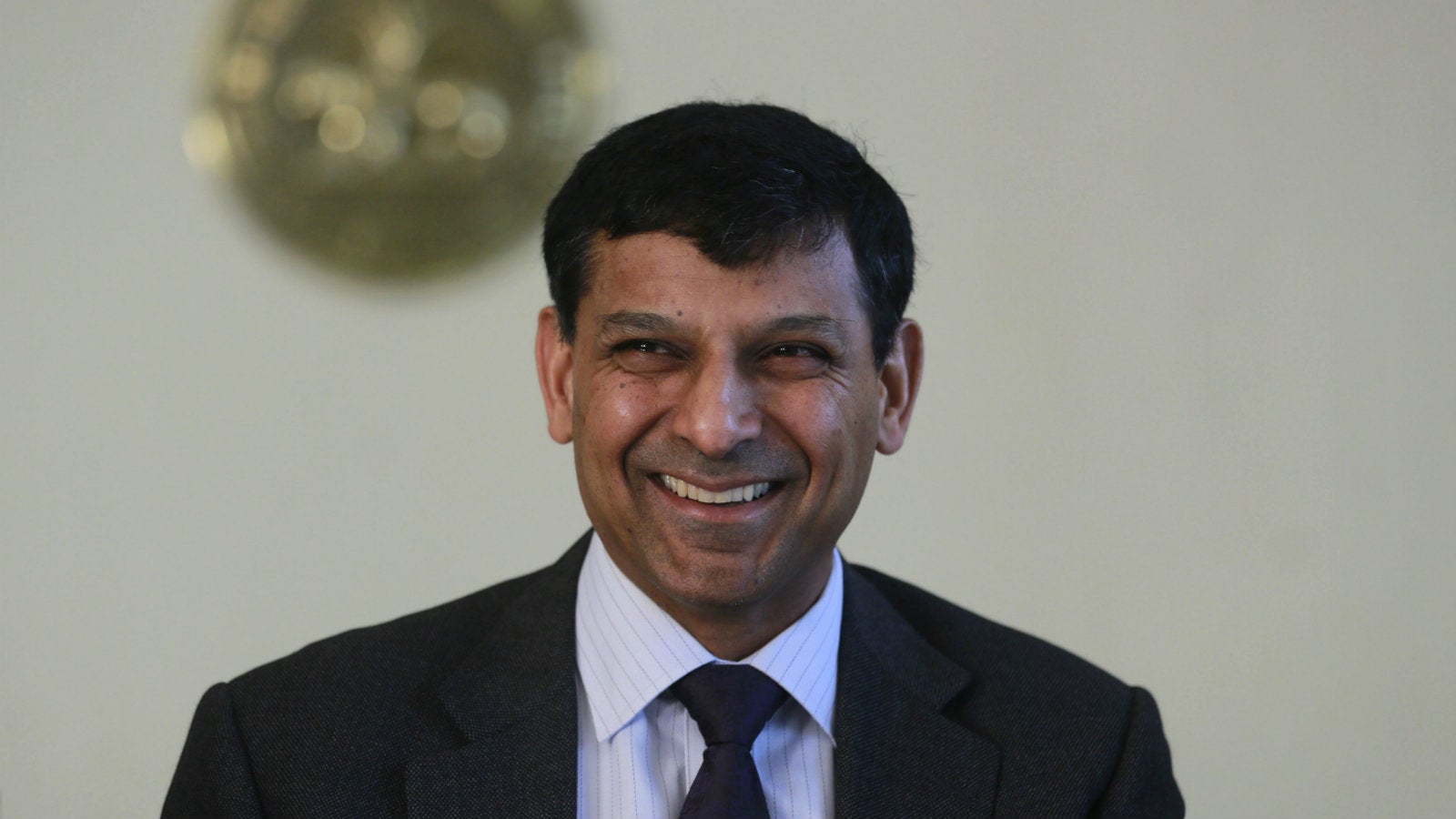Those criticising Raghuram Rajan need only look at what he has done for the Indian economy
No central banker since Alan Greenspan has aroused as much passion as India’s Raghuram Rajan.


No central banker since Alan Greenspan has aroused as much passion as India’s Raghuram Rajan.
In recent weeks, Rajan, the governor of the Reserve Bank of India (RBI), has come under a fierce attack by influential members of prime minister Narendra Modi’s Bharatiya Janata Party (BJP) and some right-wing opinion makers. Rajan, appointed by former prime minister Manmohan Singh in 2013, completes his three-year term in September.
Given his international credentials—he was the chief economist at the International Monetary Fund and is on leave from the University of Chicago’s Booth School of Business where he is a professor–and widely perceived success as RBI governor, his reappointment was a foregone conclusion. However, recent events have weakened Rajan’s position.
Many independent voices and some right-of-center opinion makers have rallied to his side. Even members of the opposition, including this author, want him to continue. Rajan has international credibility, his is a powerful voice in support of inclusive development, and his record as RBI governor is enviable. His departure would be a terrible signal to the world.
Taming inflation
Before I get to the recent vilification campaign against Rajan, it is worthwhile to examine his record. When Rajan took over in September 2013, India was suffering from chronic inflation. Retail inflation was close to double digits. To further complicate matters, the Indian rupee had just gone through a period of instability with the exchange rate threatening to break the Rs70 per US dollar barrier. Finally, India’s financial circles were abuzz with serious problems related to the banking sector. Specifically, non-performing assets were growing and bank balance sheets were suspect.
So, what did Rajan do?
First, he took a hard line on inflation. Despite pressure to reduce interest rates to spur growth, he actually increased the main lending rate twice in his first few months at the RBI. He unequivocally made fighting inflation a priority and it has come down considerably to 5.4% in April. Of course, the steep decline in crude prices has helped as well but his stewardship on inflation has been an important factor.
With lower inflation, the RBI has reduced the main lending rate to 6.5%, the lowest since 2011. But, he has not imperiled his inflation fighting goals and has staved off pressure from politicians and corporates who want even lower rates.
Markets and Rajan
Rajan’s presence and policy actions calmed nerves in the financial markets at a crucial time in 2013. For instance, at a time when financial flows into India had slowed, the RBI created a window to attract billions of dollars from non-resident Indians (NRIs). Rajan’s focus on reducing the volatility of the rupee was the correct policy response and one for which the RBI deserves much credit.
One of his biggest challenges has been that of a banking sector weighed down by bad loans. When he took over, the exact magnitude of the problem remained unclear. Basically, banks had been under-reporting bad loans. Rajan forced banks to aggressively recognize bad loans by asking them to not treat restructured loans as performing assets.
This led to a spike in levels of stressed banking assets but transparency helped avoid panic. Rajan made the case that fully understanding the problem may result in short-term pain but advocated a long-term view. For now, the markets agree with him.
The attacks
With major successes under his belt and a stellar reputation to boot, Rajan’s continuation as RBI governor should be a formality. But, a full-scale attack on Rajan by senior BJP leaders has created uncertainty. In particular, Subramanian Swamy, a firebrand ultra-nationalist leader, argued that Rajan’s policies are leading to unemployment and collapse of industry. In this, he received support from the commerce minister, Nirmala Sitharaman.
Perhaps some in the BJP are upset at Rajan’s characterization of the Indian economy as a “one-eyed king in the land of the blind.” He was speaking during the spring meetings of the World Bank and the IMF. However, the context was clear. Given global weaknesses, India is doing relatively well although it has deep-seated problems of its own.
More shocking than these attacks is the relatively tepid response from the government. The prime minister avoided a direct response by saying Rajan’s appointment was an “administrative subject” and shouldn’t be of “interest to media.” Perhaps that was expected.
Modi has an outsize image but he rarely speaks on serious, contentious issues. But he is by far the most powerful leader of the BJP and is also careful about his image. That is why the prime minister’s muted response has given rise to speculation that attacks on Rajan may have his tacit approval.
India needs Rajan
Rajan has positioned monetary policy as a strong and stable pillar of India’s economic framework. While India’s GDP growth numbers hog the limelight, there are deeper problems that paint a less than rosy picture of the economy. Widespread rural distress and lack of jobs for a burgeoning youth population require serious attention.
Instead of focusing on these critical issues, the government may end up damaging the monetary policy framework. Hounding out Rajan will send a profoundly negative message to domestic markets as well as the international community.
With reports emerging that Rajan is considering walking away after his term expires, Modi must use all of his powers of persuasion to retain his services. India needs Raghuram Rajan at this time of global economic uncertainty.
Soz was formerly with the World Bank, and is a national media panelist of the Indian National Congress. Views expressed are personal. We welcome your comments at [email protected].